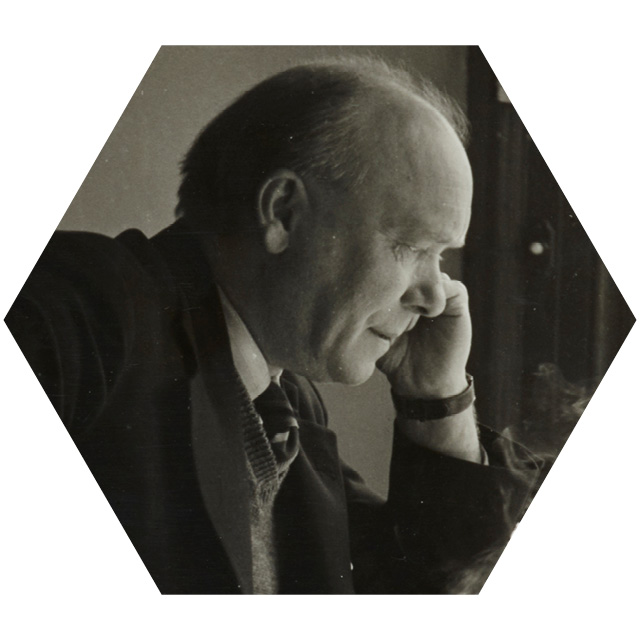William Thomas Astbury

William (Bill) Thomas Astbury (1898 - 1961) was born in Longton, Stoke-on-Trent . He was the son of a potter and won a scholarship to the University of Cambridge, where he specialised in physics, before working with William Bragg, the Nobel prize-willing crystallographer at University College London (UCL).
Astbury moved to the University of Leeds in 1928 as a lecturer in Textile Physics to study wool fibres using the new technique of X-ray crystallography. He described his work as molecular biology, a three-dimensional investigation of the structure of biological materials.
Astbury studied fibrous proteins from hair and wool, revealing a new understanding of the structure of proteins, predicting stabilising hydrogen bonding between main protein structures and describing contracted (helical) and expanded forms of proteins which he called α- and β- forms, and correspond to the α-helix and β-sheets we know today.
Astbury coined the term 'molecular biology’ and was a champion of multi-disciplinary studies, using his knowledge of physics and applying it to the biomolecular world. Astbury obtained the first known X-ray diffraction image of DNA, published on the science of hair perming and showed that soluble proteins from peanuts could be chemically treated to make insoluble fibres. This inspired the chemical company ICI to create a new synthetic textile fibre called Ardil, gifting Astbury an overcoat made from the material.
"Working Class from Longton in Stoke-on-Trent, who went to the local high school in the town (like myself); who gained a place at Leeds University, a redbrick, (like myself) and became a successful and renowned scientist (I'm working on that part!!!) despite his background, and yet has been completely and actively forgotten about in his home city.” William Neale – PhD student, Life Sciences, Keele University

